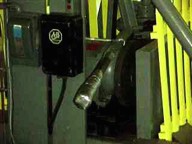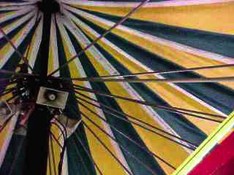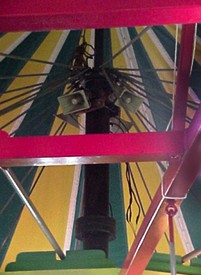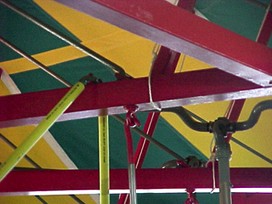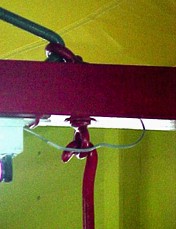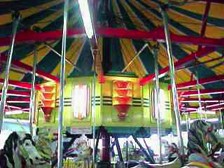|
When the carousel was first built it was steam powered. In 1894 a twenty-five horse powered engine and a forty-seven horse powered boiler were added to Menlo Park for the tobaggan ride. Today a seven horsepower three-phase 240-volt electric motor powers a series of gear systems (using fluid coupling and a set of v-belts) that move the carousel forward. |
The drive turns the carousel at a speed of approximately 5-1/2 revolutions per minute which results in the outer horses moving at about 7-1/2 miles per hour. 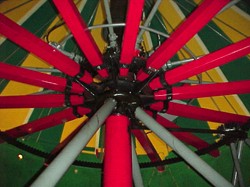 |
